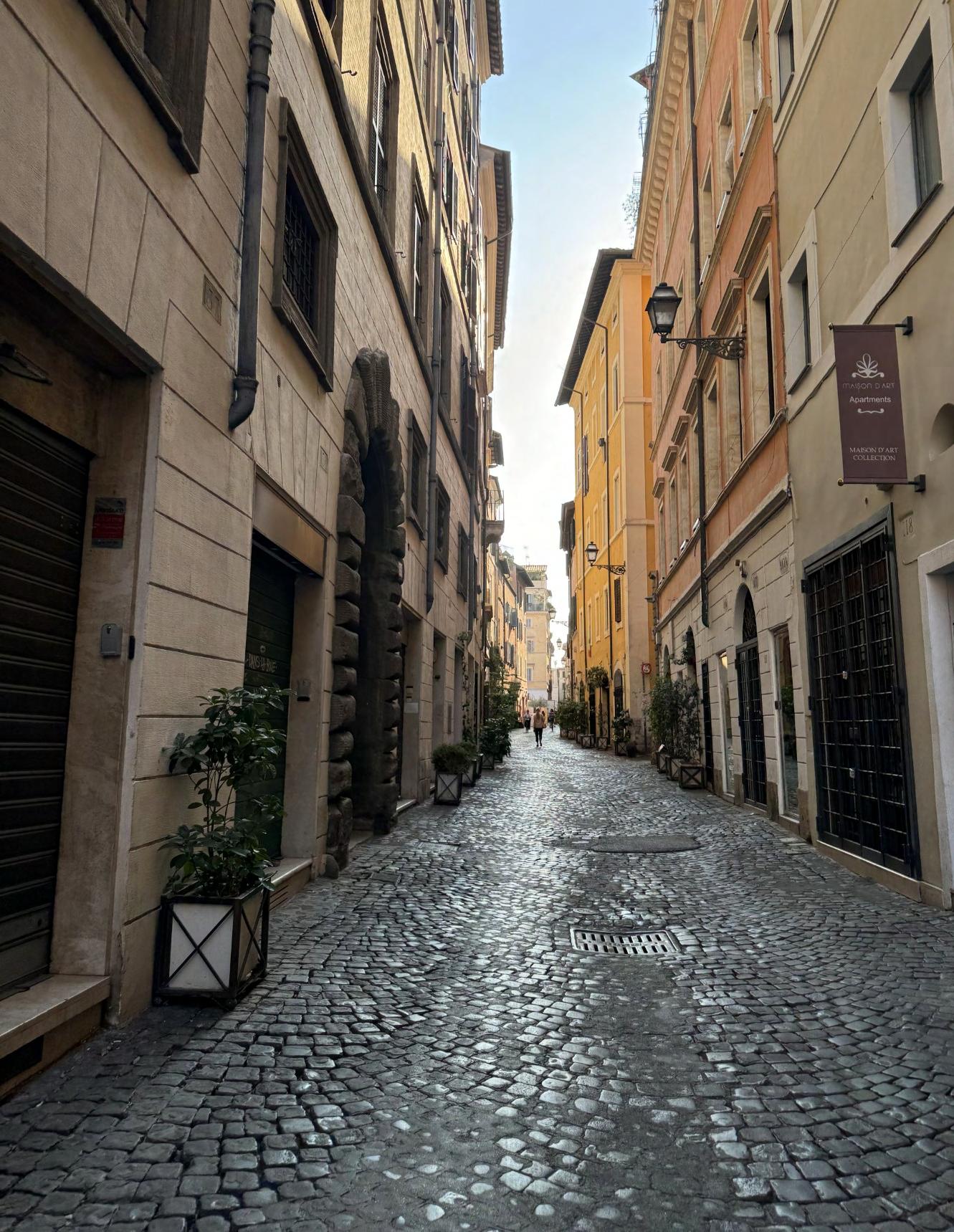

Sophia Macri
PROFILE
I am a fourth year student in a 5-year Bachelor’s architecture program. I am looking for a practical and immersive experience in the field that will expand my skillset and help me prepare for licensure. I am currently minoring in historic preservation as I have an interest in applying that knowledge into both new and existing buildings. I have also studied abroad in Rome during the Fall 2024 semester. My experience abroad has allowed me to have a better knowledge of older building types and how one would design systems within older buildings without affecting the existing architecture.
SKILLS
• Perseverance and problem solving to create iterations that refine the final product
• Taking initiative to create a better collaborative environment
• Multitasking communication and critical thinking
• Hand drafting in both design projects and personal projects
• Utilizing workshop tools to create models and topogrphy
• Microsoft Excel and Word
• 3D printing
• Programs
Adobe Suite (Indesign, Illustrator, Photoshop)
Rhino Grasshopper
Enscape
AutoCAD
Revit
Lumion
EDUCATION
Thomas Jefferson University 2026
East Falls, PA
Enrolled in 5-year B-Arch Program
Design 1-8
Visualization 1-3
Tech 1-5
Member of AIAS Club
Member of Historic Preservation Club
Historic Preservation Minor
RELEVANT COURSEWORK
Year 1
• Hand Drafting
• Visual Hierarchy
Year 2
• Identifying Needs of a Community
• Utilizing Precedents to Better Understand Building Techniques
Year 3
• Understanding Building Systems and Coordinating Them
• Understanding Load Dynamics and How They Impact Building Design
Year 4
• Analyzing the History of a Building and Coordinating Systems Without Compromising Building Integrity
PREVIOUS EXPERIENCE
Anchor Point Architecture
Audubon, NJ
(Summer 2023 & 2024)
Lee Di Prinzio
Frank Criniti
01 02 03 04 05 Aging in Place p. 21 06
Caring for Friends p. 1
Rome Study Abroad p. 7

Cabin Competition p. 13
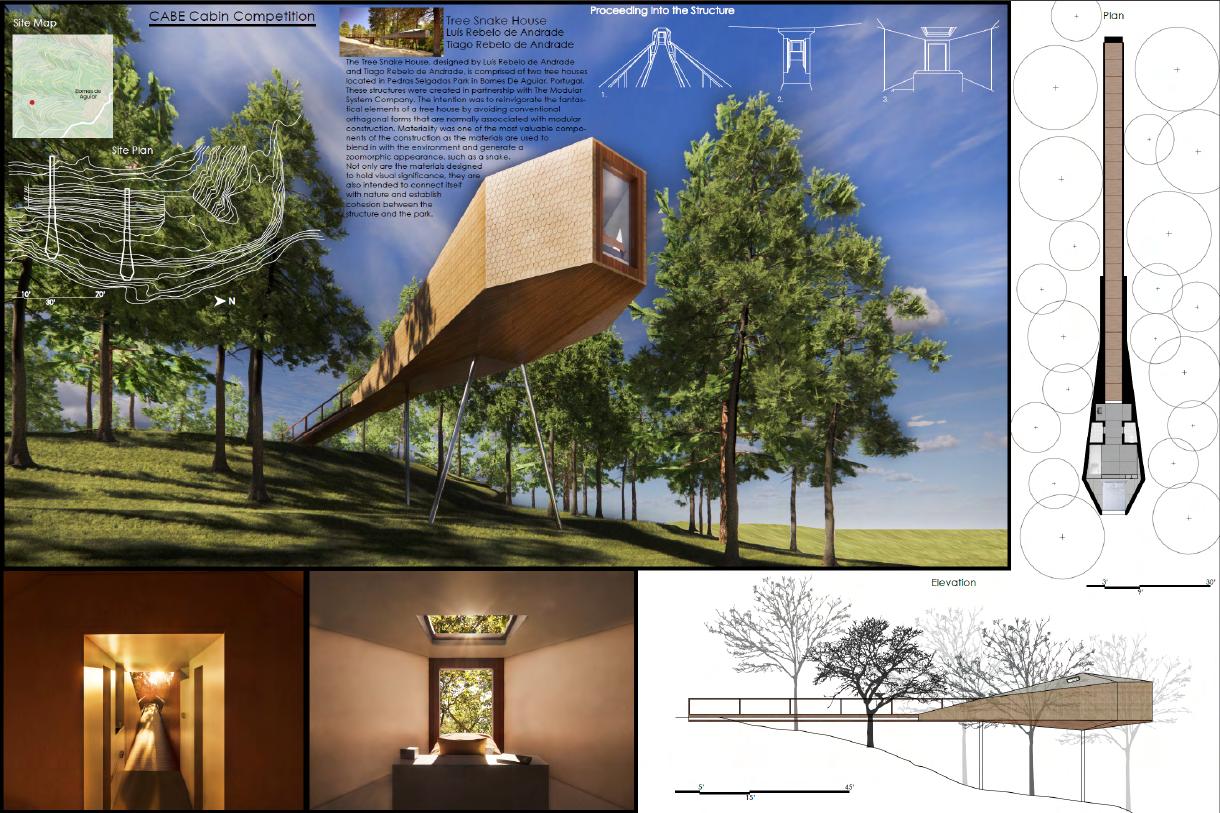
House of Peace p. 15

Building Systems p. 19
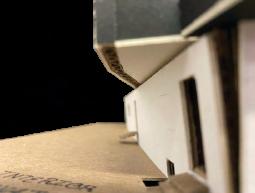

Caring for Friends To Combat Food Insecurity
After being divided into groups (with Ashley Anderson, Dylan Jones, and Mikhaila Wagner) and having a thorough understanding of the site and NPO researched, students designed a building that would become the new headquarters for the NPO. The NPO for this project was, Caring for Friends, a food donation and distribution organization located in Northeast Philadelphia. This project focused on the senior population, housing them, and providing food for them.
HOUSING OCCUPATION



& Loneliness
ASSISTED
LIVING FACILITIES AND THEIR RATINGS
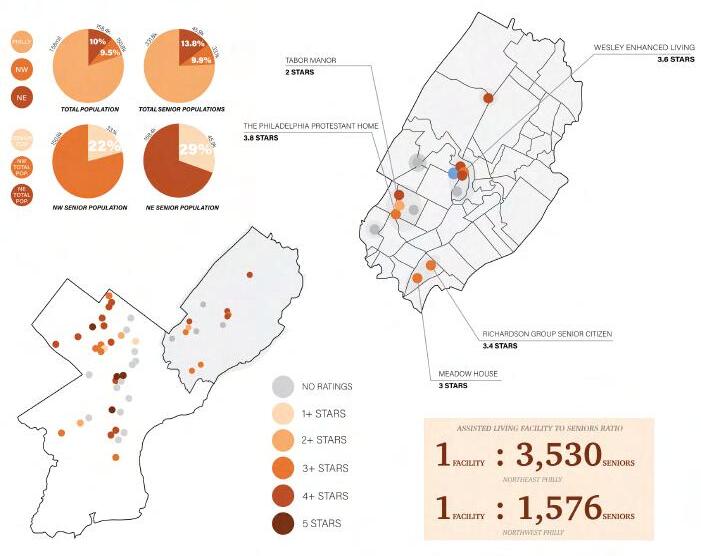
More than one third (33.6%=63,931) of Southeastern Pennsylvania adults (65+=190,271) live alone

POSSIBILITIES FOR NEW FACILITY
•Housing for Seniors (independent living & assisted living)
•Many common spaces for interaction between seniors (and volunteers)
•Food storage warehouse w/ delivery vehicle access
•Large kitchen space
•Spaces for volunteers/employees


NOISE INTENSITY

These diagrams were made in collaboration to understand the site, its context, and how our clients and users interact with the site.



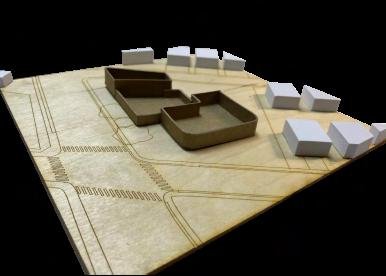
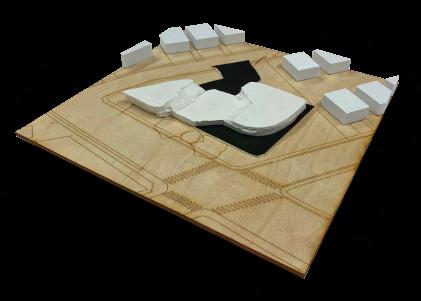
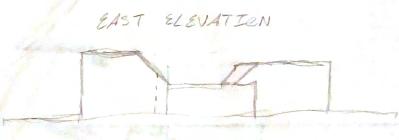


FINAL FORM





































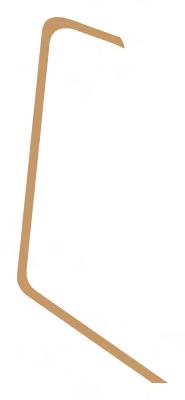


















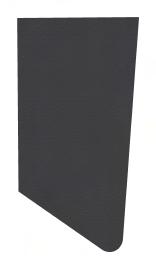








































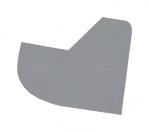















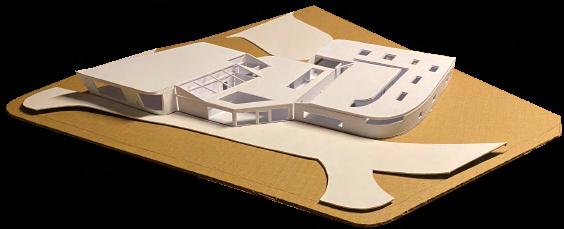





This building was sectored off into three sections, housing, dining, and distribution so that public circulation would not affect the private housing, which is intended to support those who are suffering from food insecurity. The dining section of the building is the most important zone as it is the most important aspect of Caring for Friends. Its importance is emphasized by the roofs that drape down towards it and the materiality that stretches into the other portions of the buildings.










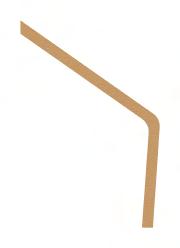

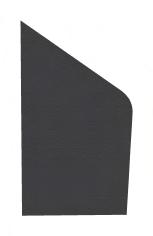







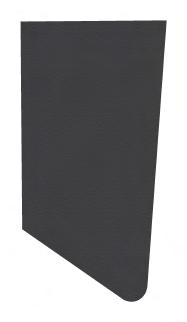


















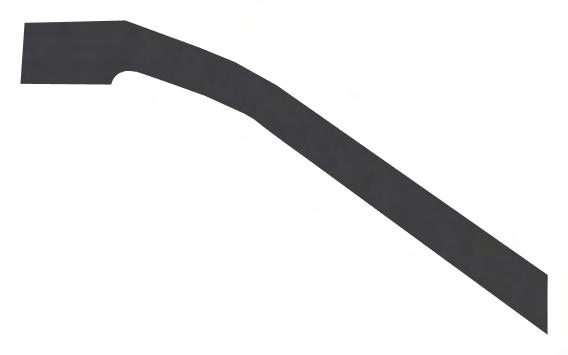




























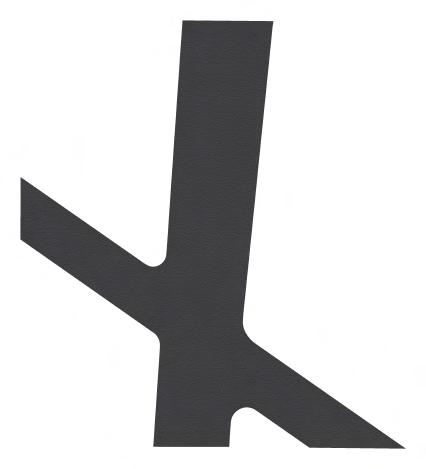





















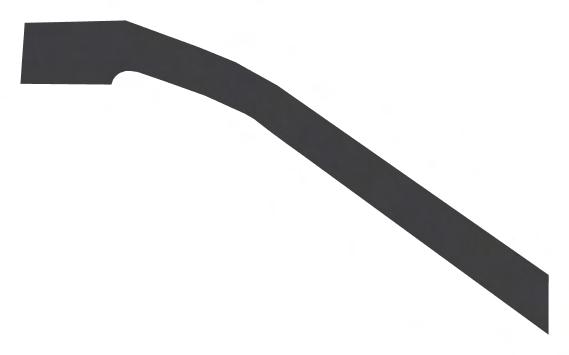





















PARKING LOT PERSPECTIVE


DISTRIBUTION








Rome Study Abroad
Flaminio Student Housing & Fresh Markets
After exploring Rome, students had to focus their new knowledge of architecture and apply it into their design in the Flaminio area. The plot was a construction site just a block away from the bustling Piazza del Popolo, a public square that is the beginning of the “urban trident.” In groups, students analyzed the needs of the surrounding area and applied that knowledge into their own designs and determined the programs of their building.
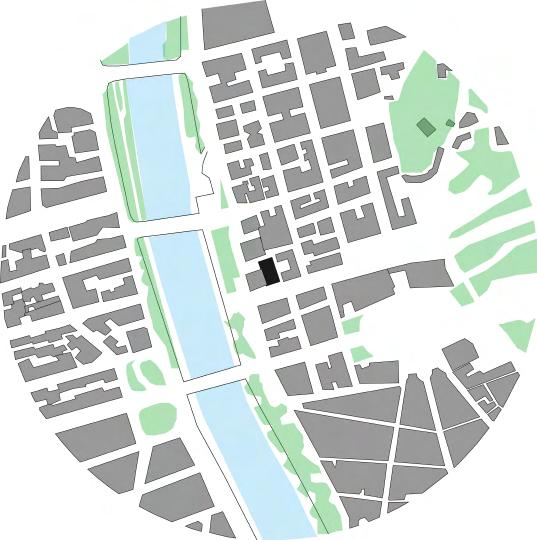
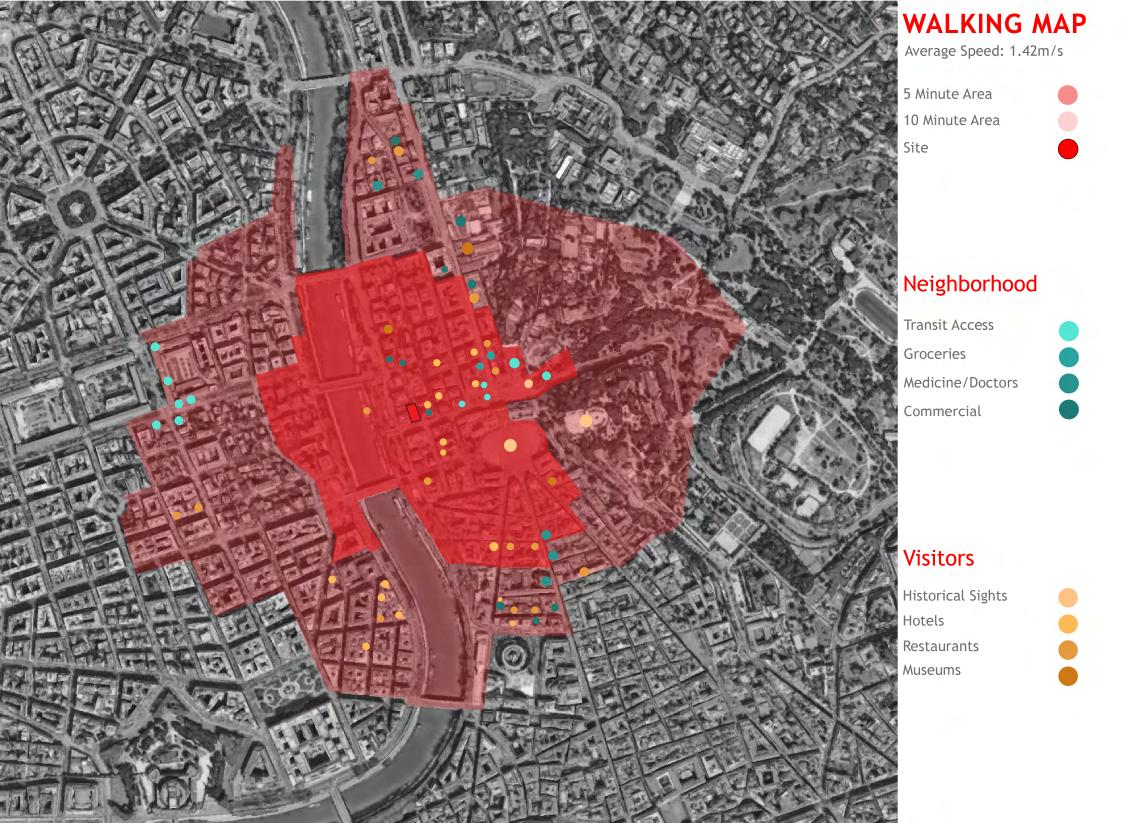
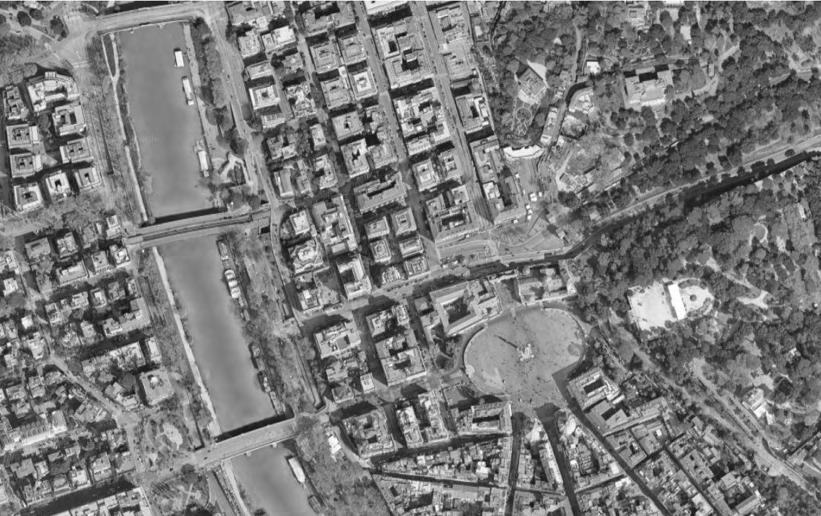











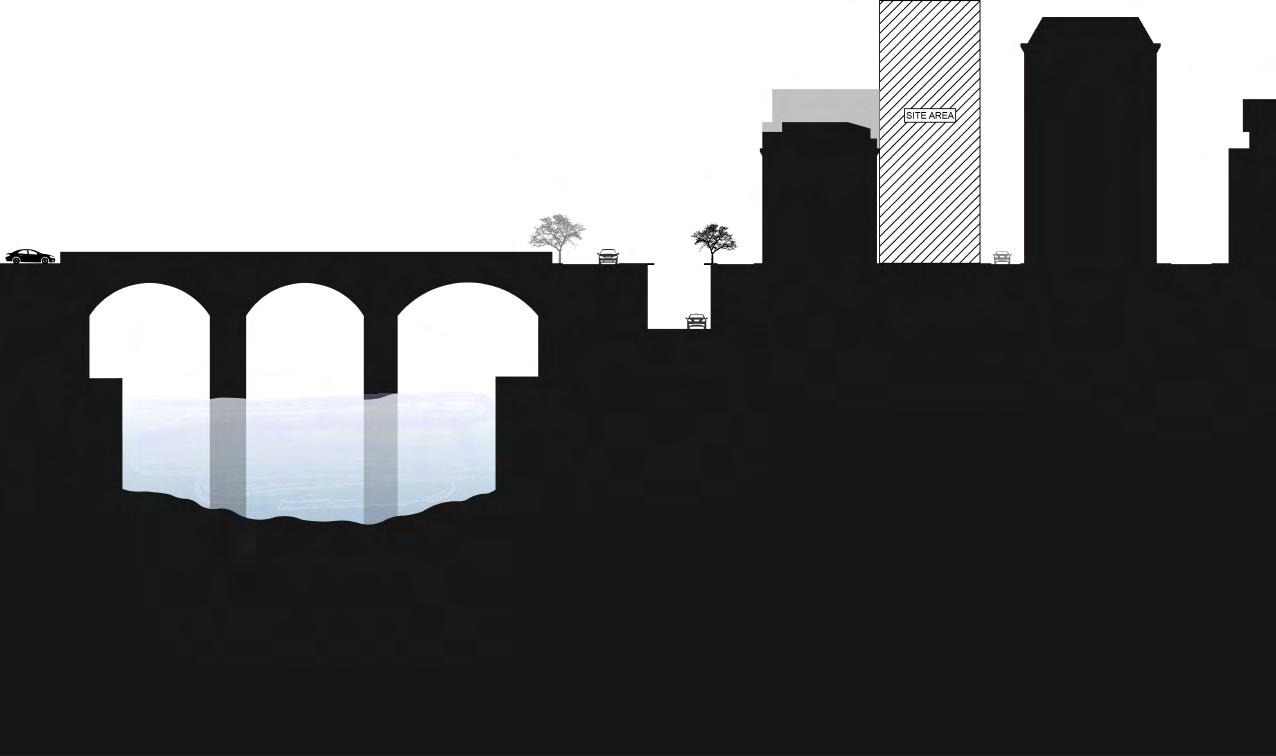

ALTERNATING ATRIUM

STACKING FLOORS W/ PROGRAM

INTERIOR COURTYARD, AXIS, & SEPARATE ENTRANCES

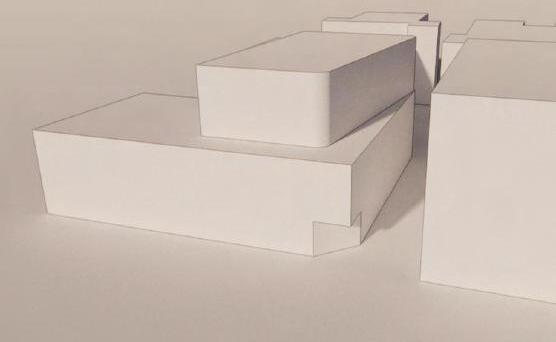
COLUMNS DEFINING RESIDENTIAL

COLUMNS DEFINING RESIDENTIAL
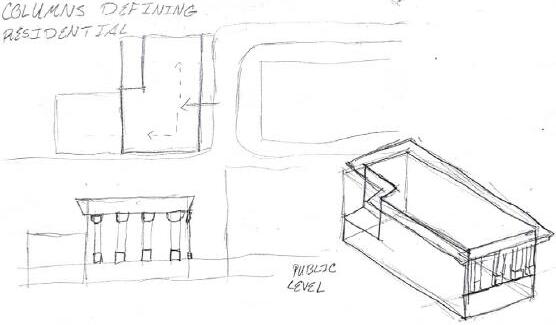
SECLUDED ENTRANCE, LEVELS, & PLATFORM

The students then began researching their own precedents for their designs and programs. The two main precedents that were chosen was Mendelsohn’s Petersdorff for its interaction with the corner of the lot and Francis H. Kimball’s Reading Terminal for its large interior market space. The area of Flaminio had a large amount of smaller markets of dedicated products. The intention of the building was to provide a large market with a variety of items that not only the public can access but also provides proper facilities for the students, such as private study areas, laundry, and storage that will be residing in the upper portion of the building.

READING TERMINAL

EXTERIOR CIRCULATION

ROOF GARDEN
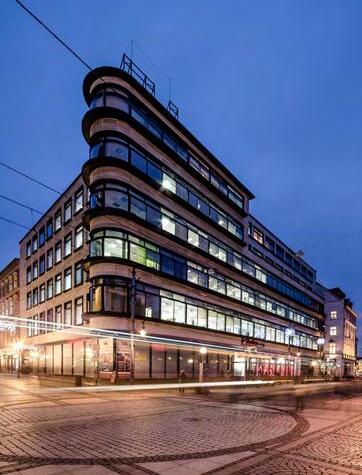
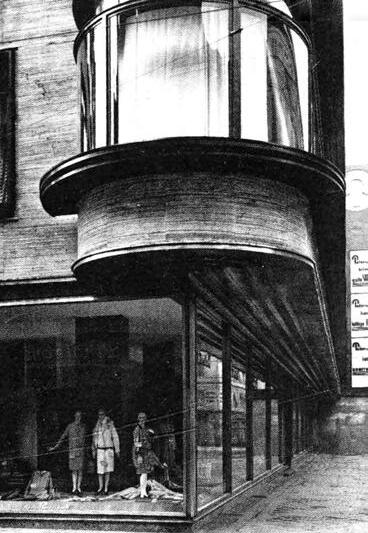
DIAGRAMS & SKETCHES FROM PRECEDENTS

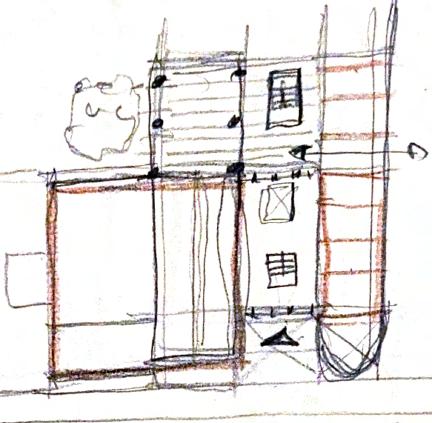
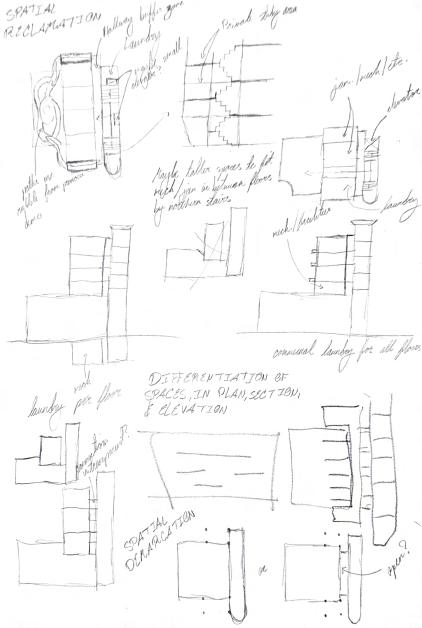

PROPORTION
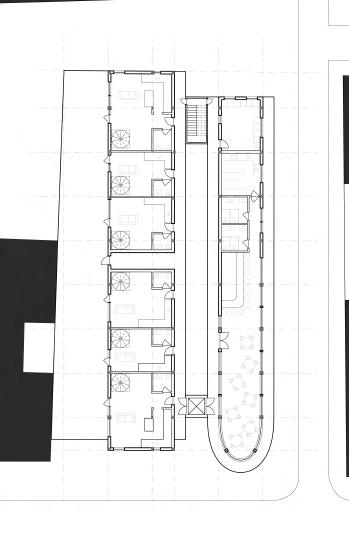

RHYTHM

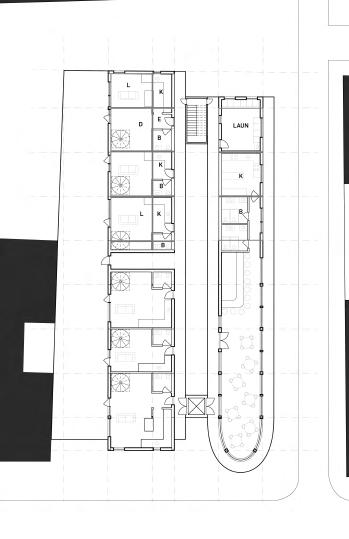
ZONES
PUBLIC CIRCULATION RESIDENTIAL RESIDENTIAL SERVICES
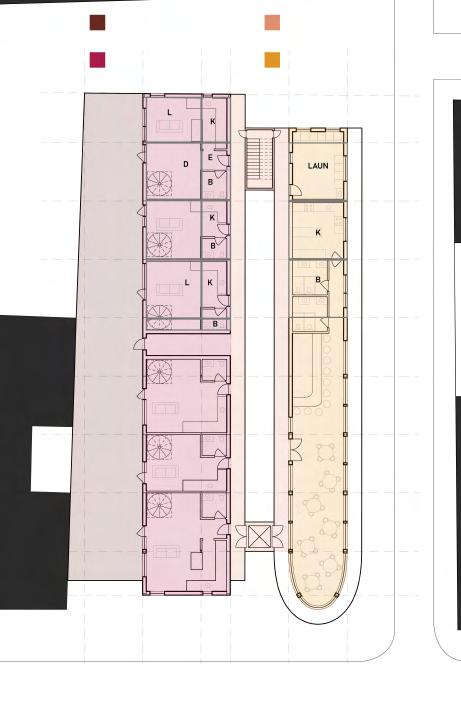
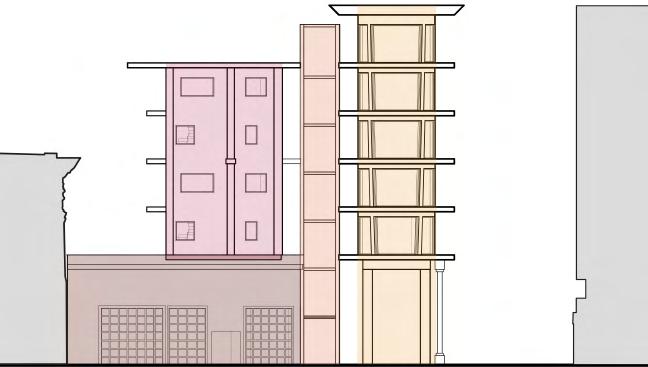



FIRST FLOOR
SECOND FLOOR ELEVATION


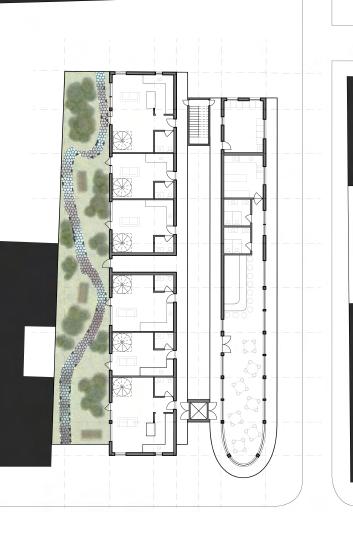

CABE Cabin Competition 03
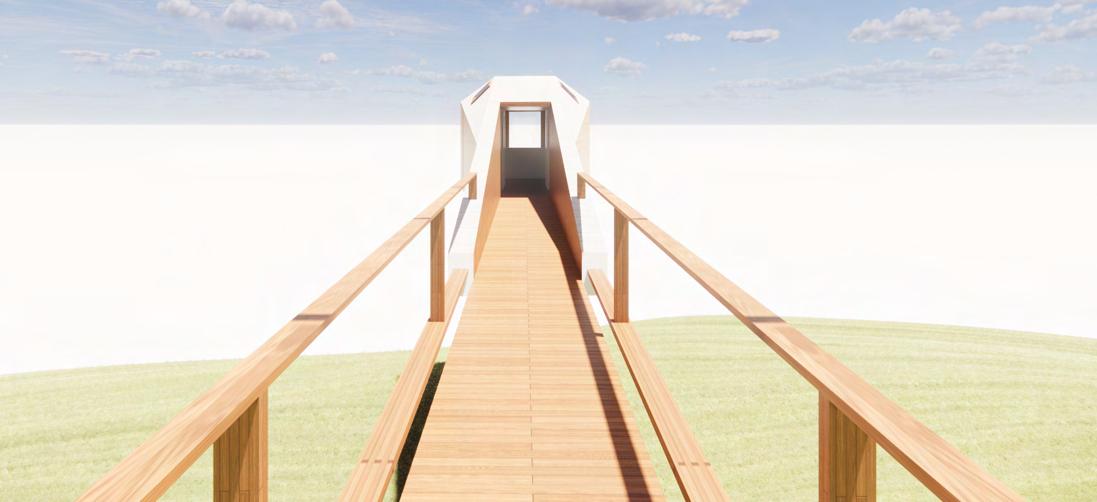
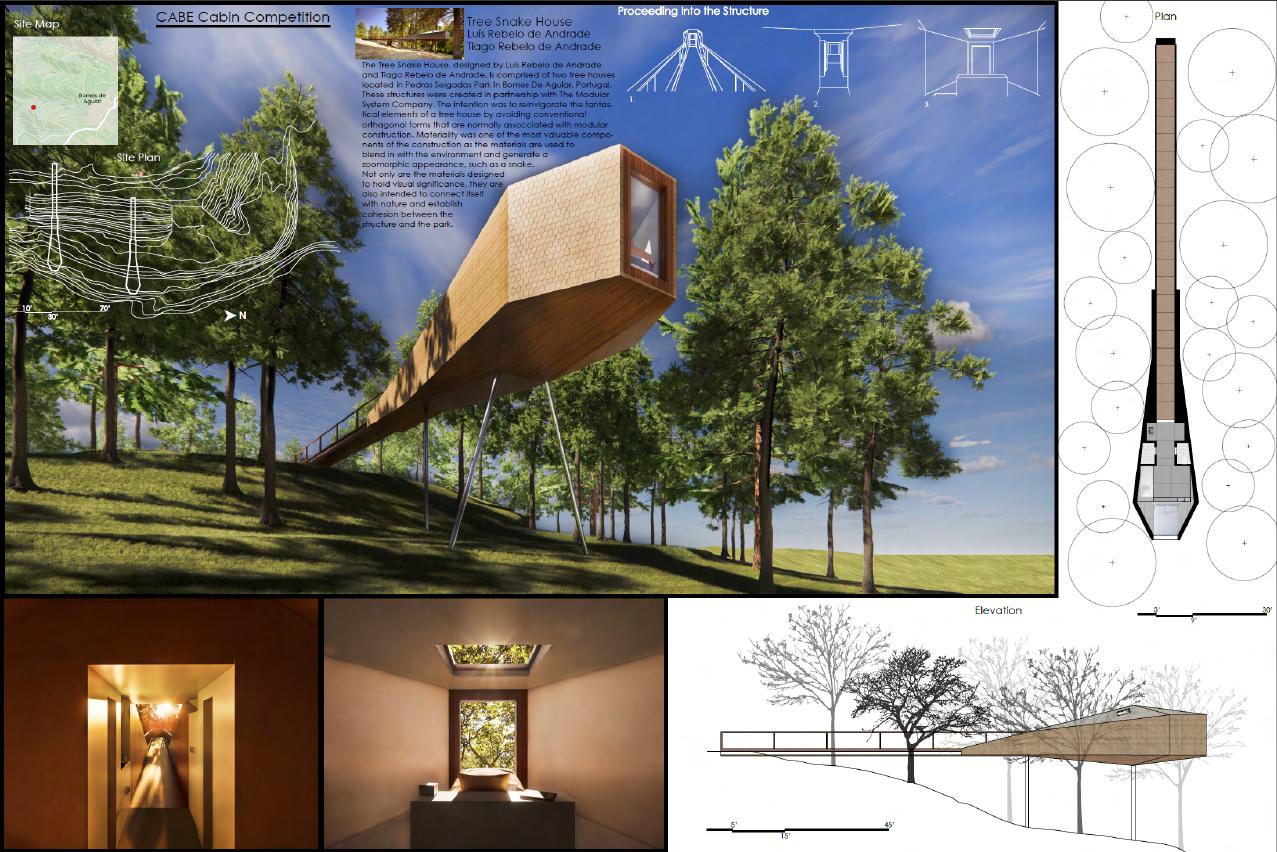

Students were asked to select an existing small rural cabin from a supplied list. After the selection process, they must model the cabin digitally. The intention of this project was to learn visualization by presenting the cabin’s interaction between the space, environment, site, and inhabitation. The competition was school-wide and had a two-round selection process by a jury, in which this project passed both rounds.

House of Peace
Breaking the Boundary into the Soul
This project is meant to create a non-denominational space that will hold Nakashima’s Peace Table. This proposal will be intending to create a space where the occupants will be able to heal their mind, body, and soul/spirit. Occupants will begin their journey, the interior being a quicker pace, while the exterior is more of a gradual and slow pace. In order to achieve this goal of healing the mind, body, and soul/spirit, occupants may join in activities like yoga, reading, and reciting to assist them to heal their mind and body. This will then continue their journey into the soul/spirit oriented sanctuary containing the peace table and meditation areas.
CONSIDERATIONS
PROGRAM & ENTRY DIAGRAMS


MULTIPLE ENTRYWAYS & DOWNWARD PROCESSION
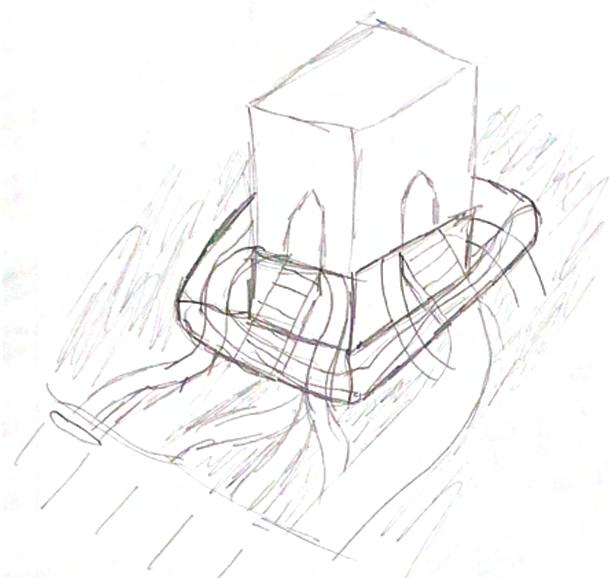



The design process started with weeks of bubble diagrams to understand the programs and spatial needs of the programs. Later on these diagrams were divided into “considerations” and “utilizations.” The conciderations had the overarching concept of using multiple entrances into the central sanctuary but was not an applicable idea as there was no end goal within the journey of the occupants.
The utilizations intended on creating a “pinch” within the central area that allows for easier circulation and implies the direction the occupant should be walking towards, the area containing the peace table. The utilizations also intended on creating different durations of their journey that was determined by the interior or exterior journey that allows the occupant to choose the pace of their journey to resoultion.
UTILIZATIONS
BREAKING/CROSSING BOUNDARY OF MIND TO ENTER SOUL
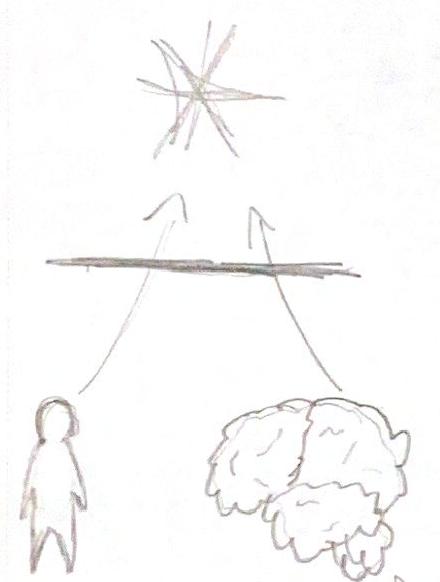

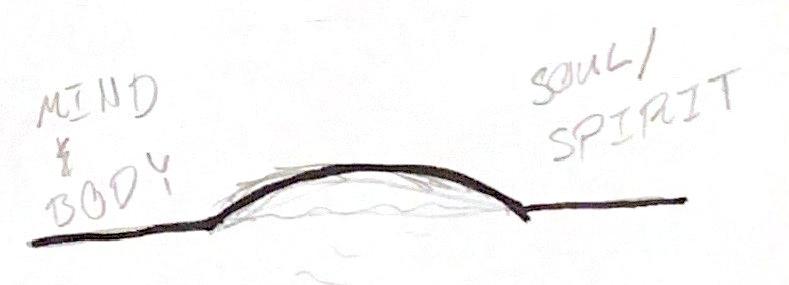
BUBBLE DIAGRAM TO FORM IN PLANCIRCULATION, LIGHT, & LANDSCAPE DIAGRAMS DIVISION OF ZONES IN SECTION

LIGHT ENTERING CENTRAL SPACE


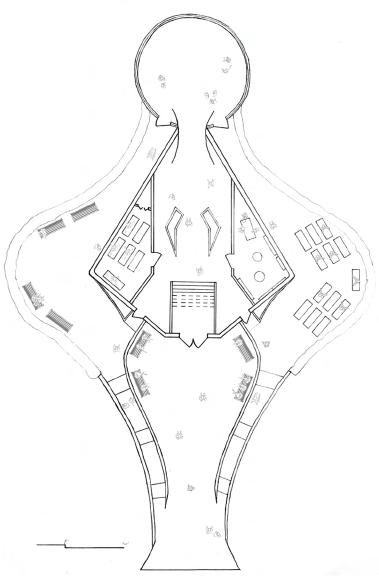
INTERIOR LIBRARY SPACE
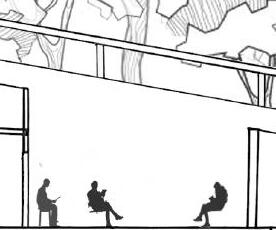
INTERIOR YOGA STUDIO



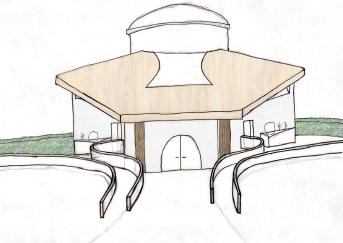
SECTIONS
SANCTUARY SPACE W/ PEACE TABLE
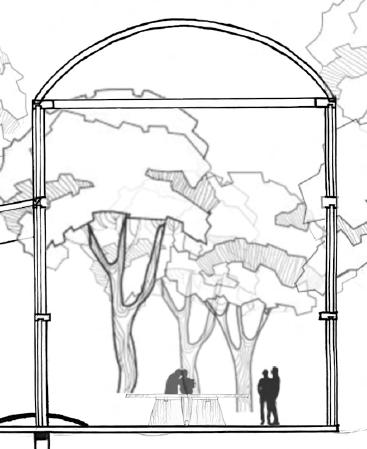

1/16 SCALE MODEL

DETAIL

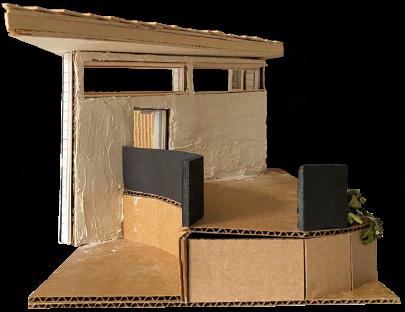
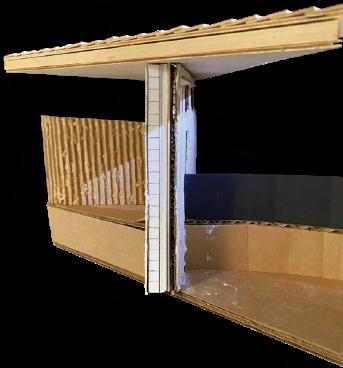
Building System Coordination & Intergration
Using CAD, students were tasked to integrate the building systems they learned throughout the semester. These building systems included solar shading, water supply and drainage, fire suppression, lighting, HVAC, and wall & roof R-values. All three floors are designed for separate tenants; the first floor is a coffee shop, the second floor is an office, and the third floor is a residential space. Taking each of these programs into consideration, the coordination between each building system was designed for each floor while also connecting vertically to ensure simple and easy to maintain system.
Students were asked to select a client and an empty plot located on the site model. The site model was created by former second year students and was passed down to the next upcoming classes. The site model is based off of an existing city in Philadelphia. It is a model of the Athletic Recreation Center and the neighboring houses located in Sharswood. The plot that was chosen was not located on the site model, however, the purpose of its location was its proximity to both the garden and the Athletic Recreation Center. The intention of this placement was to fulfill a proper connection to the community in which the owner of the building could interact with the community and vice versa.
Aging in Place A Rowhouse Design
PROPERTY LINES OF BOTH PLOTS
DIVISION LINE OF SEPARATE PLOTS


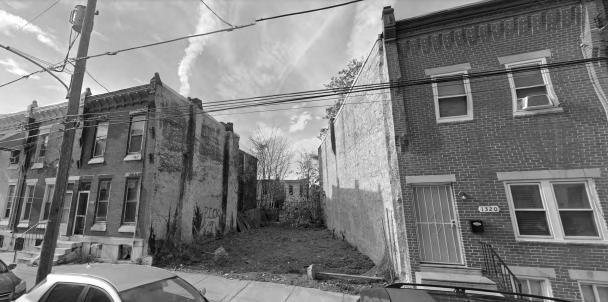
PROPERTY LINES
NEIGHBORING BUILDINGS
STAIR ACCESSIBILITY RESIDENTIAL ACCESS COMMUNAL ACCESS
As community is important to the client, the house was designed to unite both family and community but also function as separate residential and communal spaces. To create this unity whilst also maintaining privacy for the client, separate entrances for the residential and communal spaces were created. This building was not only designed for the client that would be currently residing in it, but it is also intended to be passed down through generations as a foundation of the community and a representation of the client herself.
The client for this project plays an important role in the community of Sharswood as the founder of the Block Captain Assosiation of Philadelphia. The client runs a summer camp and a food program for underprivilaged children. Aside from her community duties, she enjoys spending time with her family by hosting family holidays. The connection to family and community is integral to the design. To create this connection, there is an open kitchen to the dinning room located on the first floor where the client can cook and provide for the community and/or family sitting in the dining room or outside in the backyard with food. In the basement, there is storage for canned goods and a playroom for her visiting grandkids or the children she cares for during the summer camp. On the roof there are plant beds in which the community or the client herself can grow food that would be used in the kitchen just below them.
FRONT/PUBLIC ENTRANCE
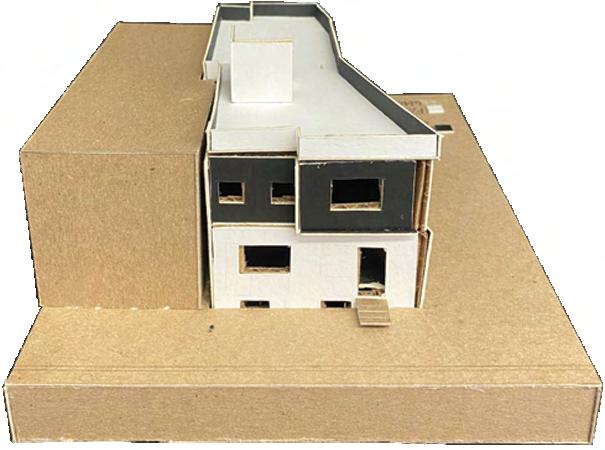
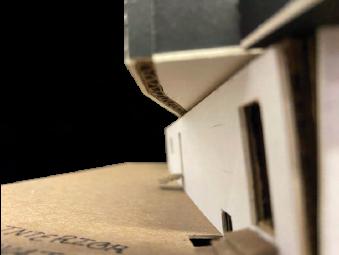
WALKWAY PERSPECTIVE WITH SITE INTEGRATION
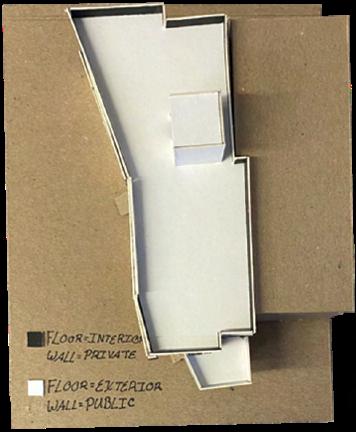
TOP VIEW WITH KEY

WALKWAY PERSPECTIVE WITH NEARBY BUILDING
BACK/PRIVATE ENTRANCE

